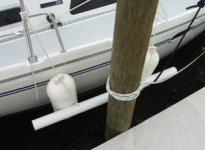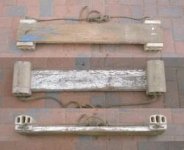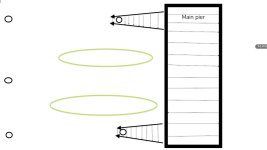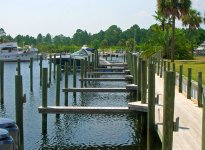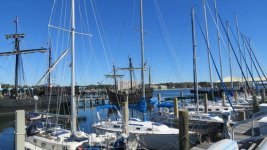RobMcClain
Member
We have always boated on the West Coast where the docks are floating and the fingers run the full boat length. Since we've been puttering up the East Coast we've found many fixed docks with finger lengths as short as 4 feet. And often one finger serves two boats. So on one side you have the short finger while on the other you are right next to a boat.
Boats at these docks are always sterned in with bow lines around pilings that are set well forward from the end of the fingers, perhaps by 25 feet or more. I can see how beamy 35' boats in these slips can get the bow lines over the pilings, but how do you do it in a narrow 22' or 23' boat? And how when you have a 20 knot wind blowing on the beam? We have run into this situation a few times and have yet to comfortably figure it out. Any thoughts, techniques, tricks, tips, things not to do....., etc, would be appreciated. It's clear we have a lot to learn in order to more professionally dock in these environments. Thanks for all feedback...
Rob
Boats at these docks are always sterned in with bow lines around pilings that are set well forward from the end of the fingers, perhaps by 25 feet or more. I can see how beamy 35' boats in these slips can get the bow lines over the pilings, but how do you do it in a narrow 22' or 23' boat? And how when you have a 20 knot wind blowing on the beam? We have run into this situation a few times and have yet to comfortably figure it out. Any thoughts, techniques, tricks, tips, things not to do....., etc, would be appreciated. It's clear we have a lot to learn in order to more professionally dock in these environments. Thanks for all feedback...
Rob

